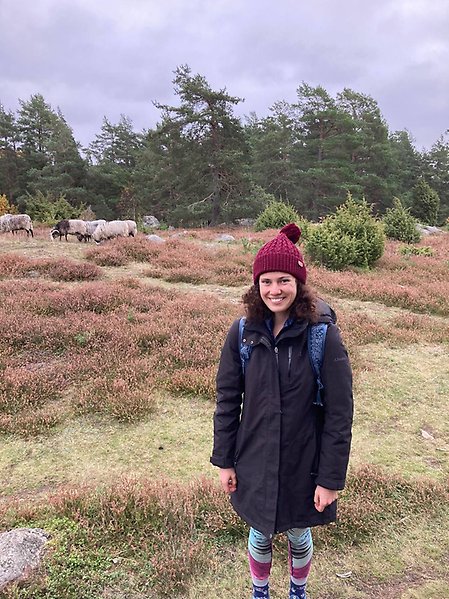Early Career Researchers
RESEARCH PORTRAIT: SHAKTI RAJ SHRESTHA
- What is your area of expertise?
I have a multi-disciplinary background i.e., in architecture, urban planning, and disaster management. Recently I have been working on Ethics and disasters.
- What sparked your interest in natural hazards and disaster science?
I was interested in disaster research after I experienced the Gorkha earthquake, 2015, in Nepal. I was in Kathmandu on the day, and the subsequent experiences of volunteering, response and recovery activities pushed me towards disaster research.
- If I could only work on one problem/issue/challenge in natural hazards and disaster science...
I will work on understanding the role of ethics in disaster in all of the four stages of disaster.
- What book or paper has been most influential to your career and why?
Not a research book, but I have been influenced by George Orwell’s work so as to critically examine human social systems and behaviors. For me, understanding people, cultures, and systems is the first step to know what research I want to do, and how my research may be beneficial to society.
- What do you like to do when you’re not working on research?
I play online chess, watch a lot of anime series/movies and run (planning to run a marathon at some point). I also like to discuss controversial ideas.
- What is your golden tip for early career scientists?
Be curious, be bold, and be open to a different perspective. It is also important to not take oneself too seriously!
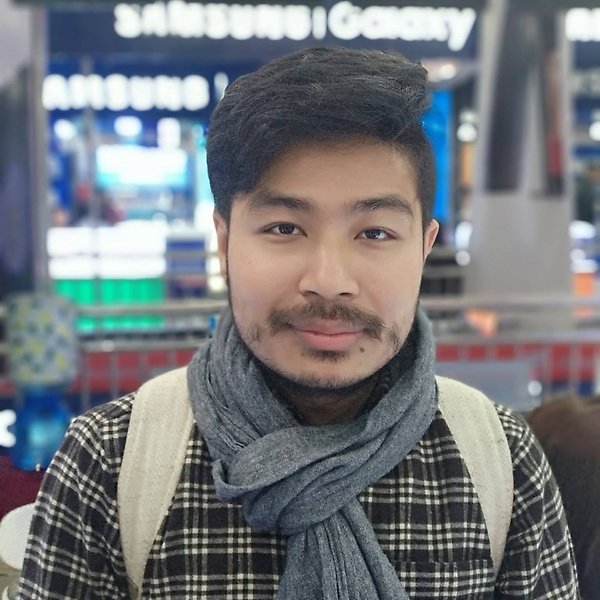
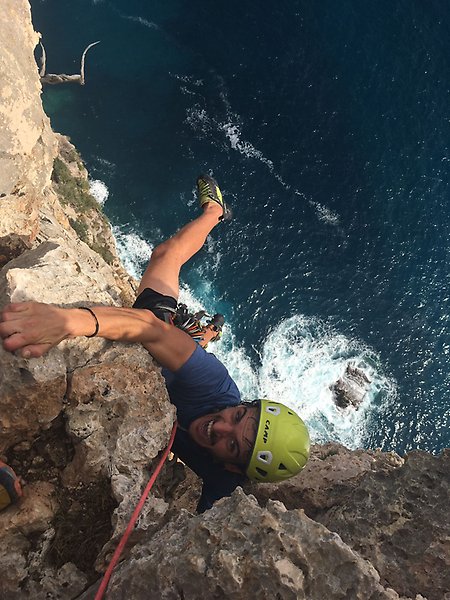
RESEARCH PORTRAIT: RICCARDO BIELLA
PhD student at the Department of Earth Sciences, Uppsala University
- What is your area of expertise?
With a BSc Physical Geography and a MSc in Disaster Risk Management and Climate Change Adaptation, I am an expert at not being an expert. Instead, I have invested my time acquiring a broad knowledge base, encompassing natural to social sciences. I believe holistic knowledge to be necessary to navigate in the complexity ridden waters of Climate Change Adaptation (CCA) with a critical mindset and drawing inspiration from different fields.
- What sparked your interest in natural hazards and disaster science?
While being always interested in natural hazards from a natural science perspective, it was being accidentally involved in the response to a fire raging is a remote town of Chile that made me aware of the importance of understanding hazards from a social perspective.
- If I could only work on one problem/issue/challenge in natural hazards and disaster science...
It would be bridging science-to-policy, because I believe that the shortcomings of adaptation can be often attributed to poor management practices.
- What book or paper has been most influential to your career and why?
The latest one that I read is Disasterology. Samantha Montano sums up the two years of my MSc in a few hundred pages, all told from her personal experience and with a light, engaged, tone as practitioner and academic in the field of Disaster Risk Reduction. Must read!
- What do you like to do when you’re not working on research?
I love climbing and I never waste a sunny weekend not going out to the crag!
- What is your golden tip for early career scientists?
Never be afraid to stand up for your rights and your wellbeing. Research is work, you do not need to sacrifice your life for it!
RESEARCH PORTRAIT: SAMUEL FORSBERG
PhD student at the Department of Electrical Engineering, Uppsala University
- What is your area of expertise?
Electrical power system analysis, with specialization on grid modelling.
- What sparked your interest in natural hazards and disaster science?
The society’s dependency on electricity in relation to the energy system’s vulnerability to extreme weathers.
- If I could only work on one problem/issue/challenge in natural hazards and disaster science...
It would be designing power systems resilient to extreme heat, because it is a field of high relevance.
- What book or paper has been most influential to your career and why?
“The potential of using residential PV-battery systems to provide primary frequency control on a national level” (Luthander, Forsberg 2018). My first paper, based on my master thesis, that inspired me to begin my PhD studies.
- What do you like to do when you’re not working on research?
Cook (and eat) food, play bass guitar, exercise, volunteer in church.
- What is your golden tip for early career scientists?
Being a researcher is your profession. Make sure to have a life outside of academia.
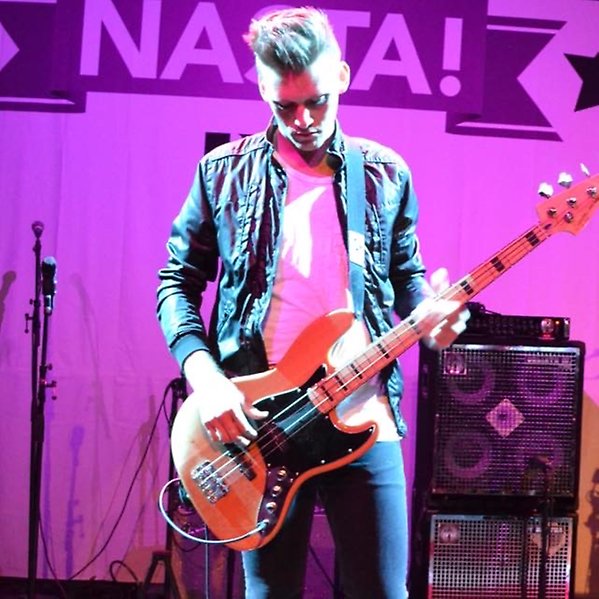
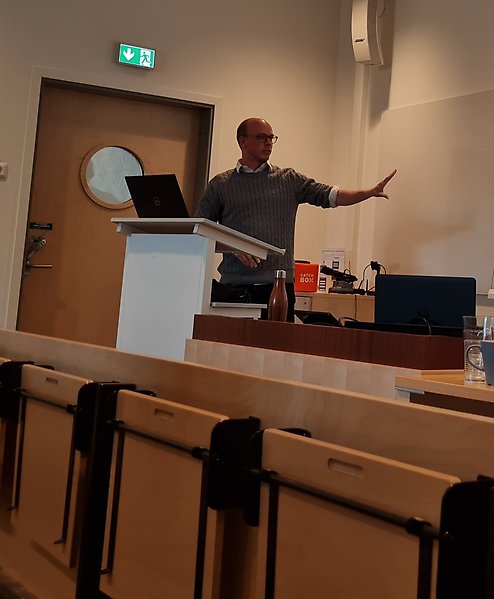
RESEARCH PORTRAIT: RASMUS ANDRÉN
PhD student at the Department of Political Science and Law, Swedish Defence University
- What is your area of expertise?
I’m mainly concerned with ontological security studies and narrative analysis, applying it to the area of environmental security where I examine how disasters are made sense of in the context of hostilities and conflict.
- What sparked your interest in natural hazards and disaster science?
I found that discussions on disasters and conflicts often exposed a contradiction in how they were thought to interact. There are fears and worries that conflicts and hostilities will worsen as natural hazards are being intensified in the wake of climate changes. Yet there also an abundance of accounts regarding the resilience and compassion among disaster stricken communities (conflict-affected or otherwise). Puzzled by this apparent contradiction, I wanted to know more.
- If you could only work on one problem/issue/challenge in natural hazards and disaster science...
I’m not entirely sure I could, because my mind is fairly scattered and prone to spontaneous explorations of whatever comes to mind.
- What book or paper has been most influential to your career and why?
Scott Watson’s book International Order and the Politics of Disasters. For better or worse, his book made me rethink my entire project well into my second year of writing my dissertation…
- What do you like to do when you’re not working on research?
I have developed a slight addiction for bouldering and, despite my fear of heights, I look for every opportunity to climb some more.
- What is your golden tip for early career scientists?
Get going with the empirics, your research problem will come to you.
RESEARCH PORTRAIT: ÅSA DAVIDSSON
PhD Student in Risk- and Environmental Studies, Karlstad University
- What is your area of expertise?
I have an interdisciplinary approach of environmental studies and risk management. My research field is natural hazard related disasters and the positive changes for the environment that these disasters might generate -a window of opportunity. After a natural hazard there can be changes made within the society that are beneficial for the environment. For instance changes made towards the SDGs, restoring degraded environmental areas, increased biodiversity or reduce air pollution. A disaster have the potential ability to enhance opportunities for the environment, the difficulty is to find them.
- What sparked your interest in natural hazards and disaster science?
It started when I took my master at Kau in “Risk management in society”. Natural hazards, including climate change, was one of the risks studied which I found really interesting. The reason is that we will never have a world where there are no natural hazards. At the same time we are making them more severe when causing climate change. The complexity of natural hazards and our (human) way of adapting, fighting or ignoring them will affect not only the lives of today, but for future generations. Both for human and our environmental systems.
- If you could only work on one problem/issue/challenge in natural hazards and disaster science it would be...
Positive sides of a disaster. We are familiar with the negative sides of disasters but there are less research about possible positive aspects. For instance changes made that are beneficial for the environment which could contribute reaching some of the SDGs. This will generate further positive aspects, like if there are greener solutions within cities, the cities will also be more resilient towards climate change such as heat waves and heavy rain.
- What book or paper has been most influential to your career and why?
J. Birkmann, P. Buckle, J. Jaeger, M. Pelling, N. Setiadi, M. Garschagen, N. Fernando, J. Kropp, Extreme events and disasters: A window of opportunity for change? Analysis of organizational, institutional and political changes, formal and informal responses after mega-disasters, Natural Hazards. 55 (2010) 637-655. https://doi.org/10.1007/s11069-008-9319-2.
The reason for this being the most influential on my career is that it was from this article that I first got to know about the concept of window of opportunity for change within the environmental dimension. It was also from this article I drafted the framework to my first research article.
- What do you like to do when you’re not working on research?
I like to exercise. I mostly go to the gym or take a run in the forest. I have a dog so there are a lot of walking several times a day, which actually is when I get the best ideas for my work. I also like to bake, mostly cakes and cookies.
- What is your golden tip for early career scientists?
Make sure to take weekends off and prioritize vacation every year. A rested mind is an efficient mind!
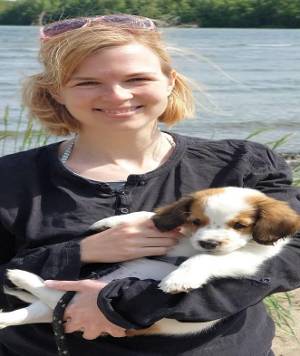
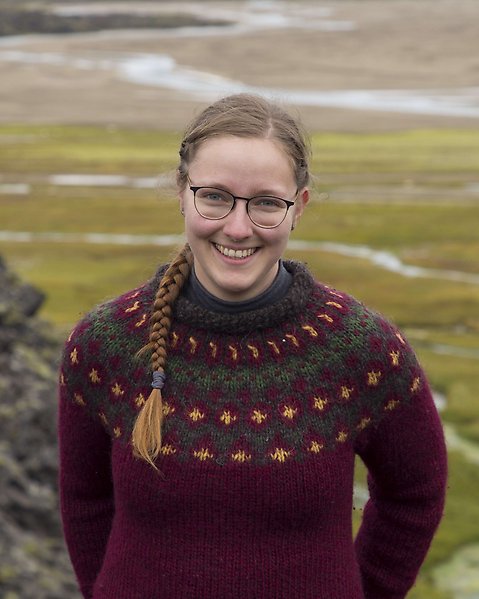
RESEARCH PORTRAIT: SONJA GREINER
PhD student at the Department of Earth Sciences, Uppsala university
- What is your area of expertise?
I study and model volcano deformation, which is how the ground moves when magma accumulates under the surface. My main interest is how crustal heterogeneity, such as layers of varying stiffness or fractures and faults, influences the shape of such intrusions and observations on the Earth´s surface, and consequently, our interpretation of where the magma is located and how much it may be.
- What sparked your interest in natural hazards and disaster science?
After I finished school, I spent a year working in Iceland. A few weeks after I arrived, a volcano started experiencing unrest. Because the volcano is located under a glacier, there was a chance that, in case of a subglacial eruption, flood waves of meltwater would flow down the river next to which I lived at the time. As a result, we got evacuation plans. In the end they were not needed, because the magma eventually surfaced north of the glacier and far away from any settlements or infrastructure. None the less, coming from a country without major earthquakes or active volcanoes, this left a huge impression on me and sparked my interest in volcanology and volcano monitoring.
- If I could only work on one problem/issue/challenge in natural hazards and disaster science...
It would be impossible to decide, because I think it is important to ask any research question in a wider context, not as an isolated issue. However, in terms of volcanic processes, I would like to work towards dynamic and more realistic models of magmatic subsurface processes. It may not be the answer to all problems, but it would hopefully help with volcano monitoring and short-term hazard assessment during periods of volcanic unrest.
- What book or paper has been most influential to your career and why?
The most influential paper to my career so far is probably “Volcanic plume height correlated with magma-pressure change at Grímsvötn Volcano, Iceland” by Hreinsdóttir et al. (2014).
When I first read it, I really liked the idea of connecting two different research approaches, in this case models of volcano deformation and plume height, through common or connected parameters, which here were the pressure change and magma flow rate. This article later became one of the corner stones of my MS-thesis and the multidisciplinary aspect, which I liked so much during the first read, is now an integral part of my PhD project.
- What do you like to do when you’re not working on research?
When I am not working on research I like to knit and to spend time outside taking photos or simply enjoying nature.
- What is your golden tip for early career scientists?
Never stop being curious and keep asking questions. You either get answers and learn something, or you can try to find answers yourself in your research. Since I only started my PhD a year ago, I cannot really tell if this is a golden tip, but at least so far it worked for me.
RESEARCH PORTRAIT: TAYLOR WITCHER
PhD student at Department of Earth Sciences, Uppsala University
- What is your area of expertise?
I’m studying an interesting fracture system preserved in a shallow rhyolite magma chamber in eastern Iceland. This entails the combination of volcanology, rock mechanics, and ore geology. Extensive field work and lab experiments are where I’m happiest.
- What sparked your interest in Natural Hazards and Disaster Science?
Volcanoes have intrigued human kind since the beginning. I’m working with a team to better understand their plumbing systems. The idea is, we can project our findings from old extinct systems onto active volcanoes, and improve forecasting abilities to mitigate hazards from eruptions.
- If I could only work on one problem in Natural Hazards and Disaster Science...
It would be volcanic eruptions! Because of how important it is to be able to recognize the signals that say a volcano is going to erupt, and communicating to city officials to make the call to evacuate civilians.
- What book or paper has been most influential to your career and why?
The book “The man who found time” by Jack Repcheck has influenced me the most in my career. It’s about James Hutton, known as the Father of Geology, and how he used simple observations of natural processes around him to make the first claim that the Earth is much much older than what was accepted at the time (mid 1700s).
- What do you like to do when you’re not working on research?
When I’m not working, I like to play outside—hiking, biking, paddle-boarding, rock climbing, etc. I like to cook meals and host dinner parties, knit socks, draw and paint pictures and read good books.
- What is your golden tip for current early career scientists?
Follow your enthusiasm. If you find something boring, avoid it—and if you find something you really like, go after it! And also, talk to professors and PhD teaching assistants who find the same things interesting. This business is all about networking and it pays to know people!
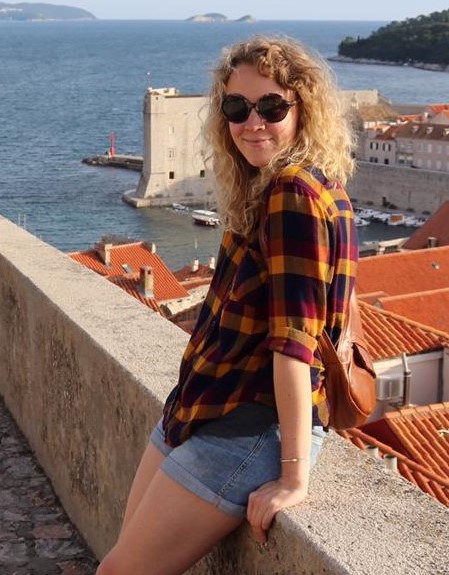
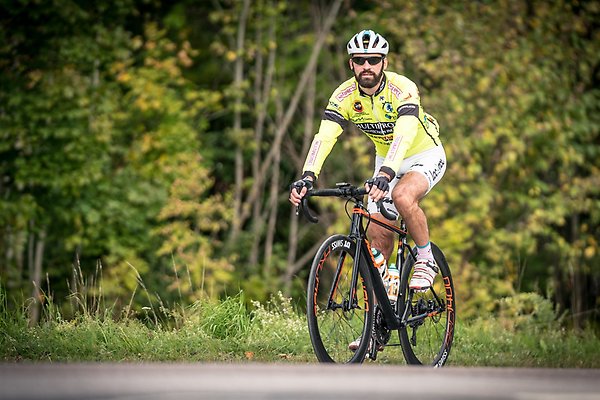
RESEARCH PORTRAIT: KEVIN DUBOIS
PhD student at the Department of Earth Sciences, Uppsala university
- What is your area of expertise?
My research focuses on Natural Hazards in the coastal zone, mainly looking at extreme conditions and currently working on compound events from hydrological and oceanographic conditions.
- What sparked your interest in natural hazards and disaster science?
Since my childhood, in the vineyard and farms, Natural Hazards have always been impactful to our community which led my curiosity and will to understand better those processes. It continued growing with time and acknowledgement of disasters as the avalanches that hit the town of Flateyri (Iceland) in January 2020.
- If I could only work on one problem/issue/challenge in natural hazards and disaster science...
It would be difficult to choose, because there are so many interesting natural phenomena.
- What book or paper has been most influential to your career and why?
I think it would be some parts of the 6th IPCC Assessment Report by its successful international cooperation and the topics covered within a multidisciplinary approach.
- What do you like to do when you’re not working on research?
I am an enthusiast of the 3B’s : Bike, Bake and Beers.
- What is your golden tip for early career scientists?
For me, my ingredient is to find a way to enjoy and stay motivated in what you do both at work and outside work in balancing both.
RESEARCH PORTRAIT: SARA LINDERSSON
PhD student at the Department of Earth Sciences, Uppsala University
- What is your area of expertise?
I am an environmental engineer with a passion for maps. In my current research, I am interested in how socioeconomic gradients affect flood and drought risk. I mostly do cross-country comparisons and geospatial analyses on large scales.
- What sparked your interest in natural hazards and disaster science?
The growing urgency of the topic is my daily motivation. The very heart of disaster science is the interaction between societal conditions and the surrounding environment, and I have always been interested in both aspects.
- If I could only work on one problem/issue/challenge in natural hazards and disaster science...
It would be popular science and communication because it is fundamental.
- What book or paper has been most influential to your career and why?
My first academic paper: A review of freely accessible global datasets for the study of floods, drought and their interactions with human societies (Lindersson et al. 2020). It broadened my perspective of what we can – and cannot – see when using a top-down global lens.
- What do you like to do when you are not working on research?
Go on adventures with my kids. Hike. Watch a movie. Gardening.
- What is your golden tip for early career scientists?
Prioritize a healthy work-life balance; it will serve you and the scientific community in the long run.

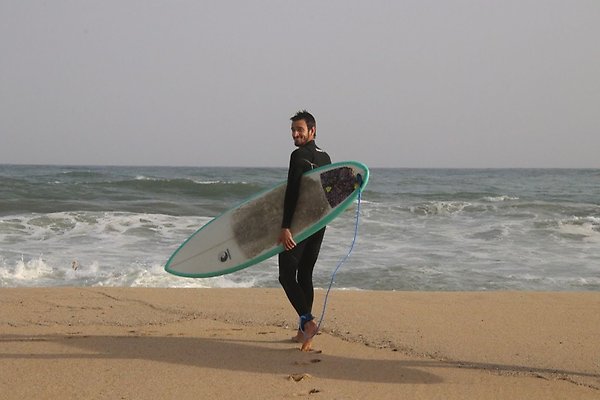
RESEARCH PORTRAIT: FERRAN LÓPEZ MARTÍ
PhD Student at the Department of Earth Sciences, Uppsala University
- What is your area of expertise?
I am studying extreme precipitation and wind events associated with atmospheric rivers. One of these regular rivers in the sky can carry as much water vapour as the Amazon river, so when an exceptional one makes landfall, it can lead to huge socioeconomic impacts. My work tries to understand how different physical processes (focusing on air-sea interactions) modulate the occurrence of atmospheric rivers and how these will change in a future climate.
- What sparked your interest in natural hazards and disaster science?
I always enjoyed spending my time outdoors and it is very important to know if the weather would be good for the activities you want to do. Where I come from, Catalunya, to have good waves for surfing or fresh snow for mountaineering is complicated and it’s usually associated with different natural hazards. For me learning to understand how the atmosphere and the ocean work was a very interesting process (still ongoing) to have even more fun later in the mountain or the ocean, but also to be safe out there.
- If I could only work on one problem/issue/challenge in natural hazards and disaster science...
It would probably be associated with coastal hazards, because in the last years, I have witnessed how the coastal areas of Catalunya are in a thread by more and more by stronger storms, floods and sea level rise due to climate change. All this combined with decades of over-urbanization of the coast is leading to the disappearance of the beaches and the ecosystems.
- What book or paper has been most influential to your career and why?
A book that was very influential for me was “Surf Science: An Introduction to Waves for Surfing” by Tony Butt. This book brought together my passion for surfing and forecasting waves with the actual science behind it and pushed me to keep learning about everything related.
- What do you like to do when you’re not working on research?
As I already said I love spending time outdoors and practising sports like surfing, hiking, ski mountaineering and climbing. Also, I have a big passion for music and a perfect evening for me would be to listen to some live music with my friends.
- What is your golden tip for early career scientists?
I am an early career scientist myself, but I would say that to be passionate about what you are doing is important to keep yourself motivated, but also it’s very important to have other interests. Don’t spend all day just working, your life is much more than your PhD.
RESEARCH PORTRAIT: EMMA ALLWRIGHT
PhD student at the Department of Earth Sciences, Uppsala University
- What is your area of expertise?
Mathematical modelling focusing on natural hazards/ climate.
- What sparked your interest in natural hazards and disaster science?
I found meteorology quite cool growing up but became interested more specifically whilst doing an internship in natural catastrophe risk.
- If you could only work on one problem/issue/challenge in natural hazards and disaster science it would be...
The application of dynamical systems theory to this field, because I find the interface between mathematics and climate/ meteorology/ natural hazards fascinating.
- What book or paper has been most influential to your career and why?
There is no one specific book or paper which has been especially influential to my career compared to other literature. Instead I would say that the discussions I had with my advisor for my master thesis had a far greater influence on my career.
- What do you like to do when you’re not working on research?
I like to cook, spend time in nature/ hiking and read fantasy books.
- What is your golden tip for early career scientists?
Take time to look after your mental health too :).
